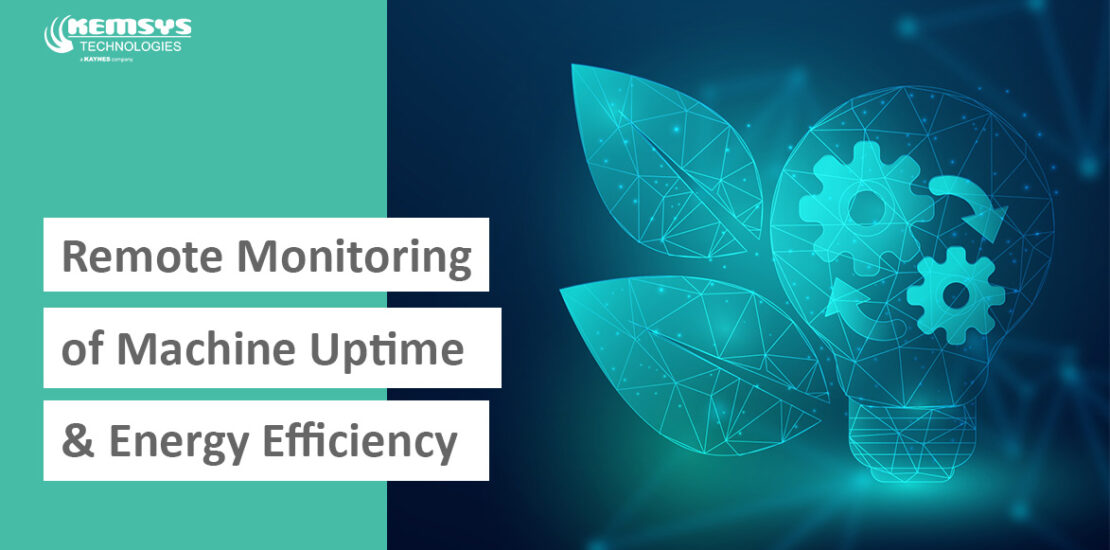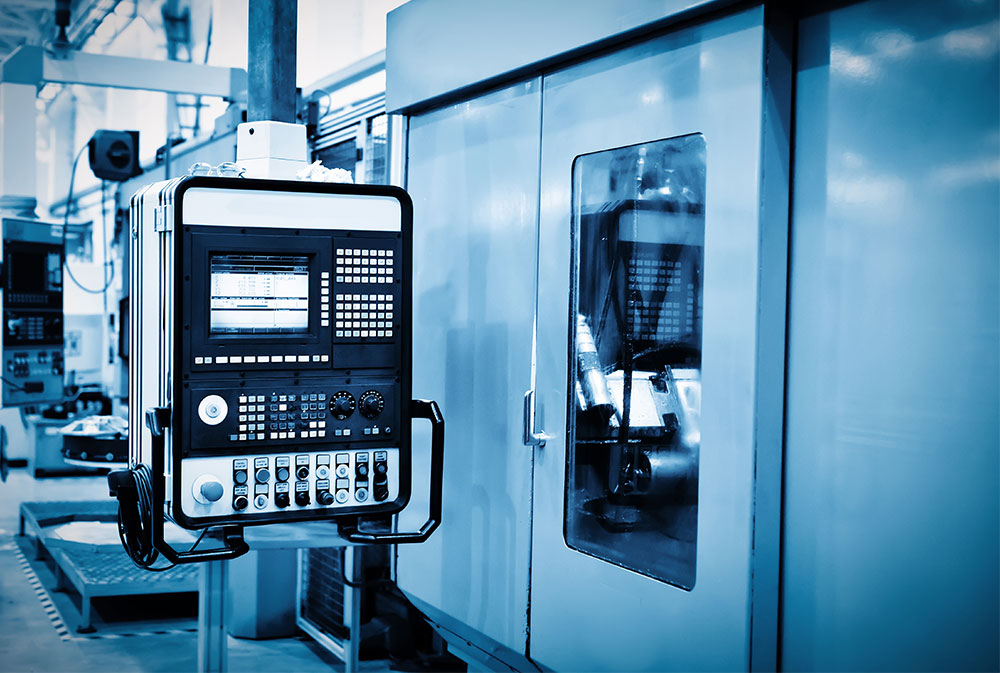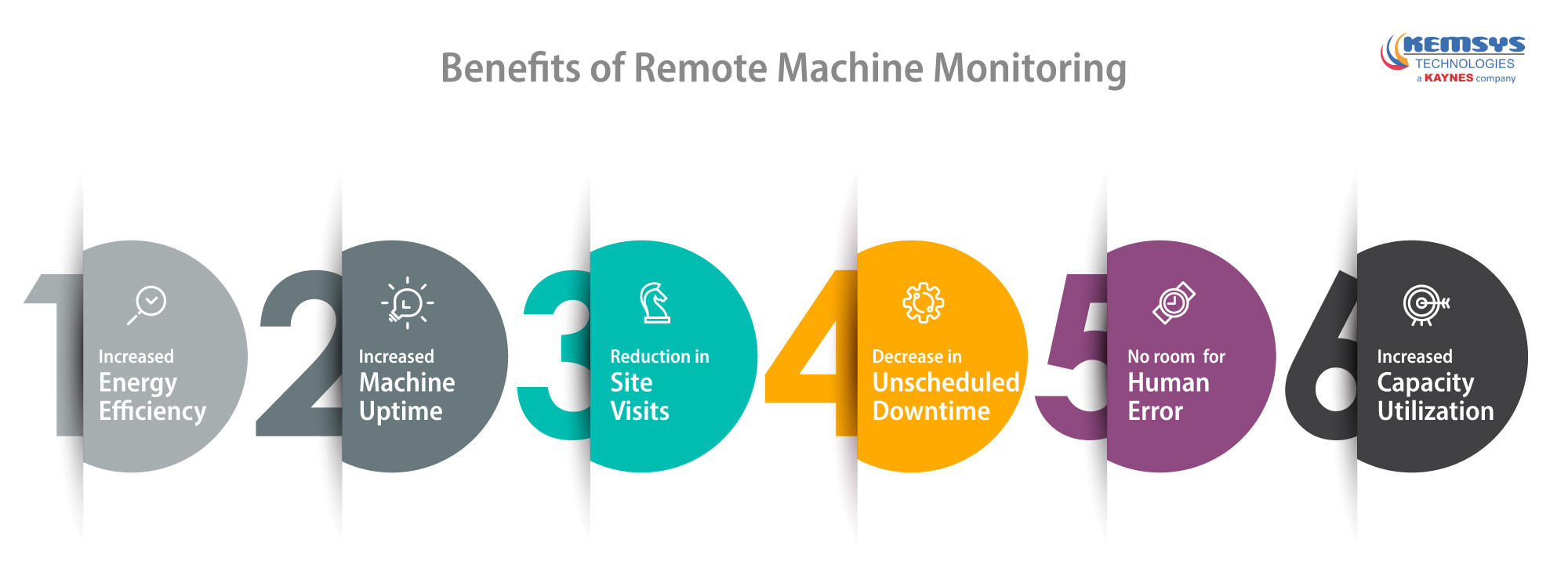Remote Monitoring of Machine Uptime & Energy Efficiency
- August 13, 2021
- Posted by: Swapnil Ghaisas
- Categories: Cloud Engineering, Internet of Things

The use of IoT has remarkably transformed the way industries interact with each other and their own respective environments. Fueled by network connectivity, IoT provides a tremendous opportunity for OEMs to improve their solutions by delivering integrated, connected, faster, accurate, and cost-effective systems. By analyzing every bit of data, OEMs can work more efficiently on extending the life of their products.
Moreover, the adoption of IoT for OEMs is a worthwhile step as it reaps several benefits from aftermarket opportunities to improved maintenance services to enhanced machine design and better revenue generation.
The IoT revolution has made headways into various industries, with experts viewing it as a great opportunity for business. With the ability to monitor energy consumption, increase machine uptime, and manage countless devices at once, IoT is the perfect way to cut energy costs by analyzing energy consumption. This consequently boosts productivity levels and increases efficiency.
There are various facets of this subject. Let’s take a look at them!
The Pre-IoT Scenario
Manual methods to monitor energy consumption have resulted in suboptimal resource consumption and loss of productivity in industries of varying scales and sizes. As we look closer, the problems seem to magnify:
- Machine downtime is a common problem across industries even today. Take for example – the OEM industry. It faces $22,000 in downtime costs per minute in the United States.
- The human factor also comes into play with pre-IoT era production models as it is important for humans to monitor uptime of machines in the manufacturing lines 24 x 7 x 365. Aside from being costly, this approach is also prone to undetected errors as human vision is prone to fatigue. Stats suggest that human error causes 23% of unplanned downtime in the manufacturing sector. This is 2.5x higher than in other sectors.
- Manual inventory checks and production level tests further complicate the issue with more resources consumed for suboptimal results.
In short, it would not be difficult to see the correlation between manual monitoring and increased downtime. With IoT in the picture, these issues can be easily resolved.

The IoT Scenario
With IoT, factories can have real-time visibility and control over their operations by connecting all the machines to a central system. This machine-to-machine communication leaves room for lesser systemic errors due to less human intervention, which means increased productivity. With this approach, it is possible for manufacturers to monitor uptime easily and save money on costly manual labor. Here is how it works:
1. The Concept of Remote Monitoring
Remote monitoring can significantly help in maintaining energy efficiency and keep an eye on machine uptime. How?
Machines like CNC Machines, Injection Molding Machines, Extrusions Machines, Die Casting Machines, electrical motors, pumps, transformers, etc. must have access to uninterrupted power for delivering intended quality outputs.
If any of these machines operate at a suboptimal energy consumption level, it results in exponentially higher power consumption overheads for the year.
The power load of a machine heavily impacts industrial energy efficiency. For instance, if an industrial electric motor is designed to work between 50-100% of the rated load, the efficiency will be high with less energy consumption. Unfortunately, in most cases, these motors are underloaded (working below 50% of the rated load). This decreases the overall efficiency and leads to higher power bills.
This is where remote monitoring can help. Such industrial machinery can be equipped with well-engineered IoT sensors that can deliver real-time machine updates to experts sitting at a remote location. This can include the temperature of the motor or pump, vibrations, humidity, power surge, rated load, and efficiency as well as all machine tooling parameters.
The collected real-time data from these machines can be sent to the cloud on a real-time basis and alarms/alerts shall be generated in order to take preventive actions to avoid machine breakdown.
Based on the received output, necessary measures or energy optimization plans can be formulated. Moreover, this can further lead to various other benefits such as:
- Increased Energy Efficiency
- Increased Machine Uptime
- Reduction in Site Visits
- Decrease in Unscheduled Downtime
- No room for Human Error
- Increased Capacity Utilization

2. Predictive Maintenance
One of the key benefits of remote monitoring is that the parameters are recorded all the time. Therefore, the collected data can be closely analyzed to collect insights indicating due maintenance.
The transition from manual to IoT-driven analysis has enabled even understaffed companies to comprehensively monitor energy consumption around the clock. With accurately scheduled maintenance, they can schedule deliveries and save on maintenance costs that come with last-minute service calls. Moreover, machine health status updates nudge the companies to take equipment maintenance more seriously, resulting in the extended usable life of such assets in industries like OEM, etc.
3. Adding Value to Other Technologies
To remotely monitor energy consumption is just about IoT. However, it can be used with various other innovative technologies to elevate the industrial manufacturing and maintenance process.
Technologies like AR can be used by experts to remotely guide the on-floor technician in the machine troubleshooting and maintenance process. This can save a lot of time for the OEMs and thus reduce machine downtime.
On the other hand, AI, Machine learning, and big data can be used to analyze IoT sensor data for devising energy-saving plans.
Final Words
IoT is a game-changer for machine manufacturers. With devices like smartphones and connected sensors in your factory or manufacturing plant, you can take advantage by reducing power consumption, enhancing efficiency, and keeping the downtime under control. Further, you can integrate other technologies like AI, AR, ML, etc., with IoT to transform your plant into a smart facility and transition towards Industry 4.0 manufacturing capabilities.


